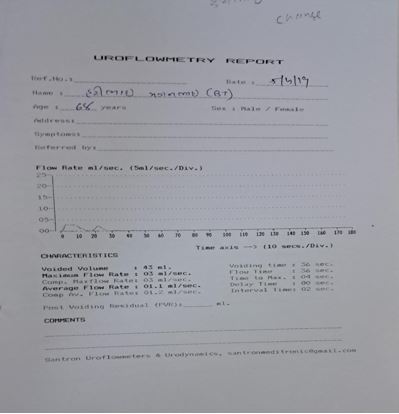Management of Mutraghata (Benign Prostatic Hyperplasia) with Bala Tail Matrabasti - A Case Study
Keywords:
Bala Taila, Basti, BPH, MutraghataAbstract
The two broad categories of Mutrakrichha and Mutraghata have been used to list all urinary diseases. The Ayurvedic text books list 8 different categories of urological illnesses under Mutrakrichha and 13 different types under Mutraghata. According to contemporary medicine, BPH is a benign enlargement of the prostate gland brought on by excessive prostatic nodule proliferation. It is a typical condition in older males and causes a large amount of morbidity in this age range. The minimally invasive approach to treating BPH is still a surgical operation at the moment, while the medication approach to treating BPH is classified as conservative. From both a modern and Ayurvedic perspective, it seems more suitable to use conservative procedures. In this case study, well diagnosed benign enlargement of prostate was treated with Bala Tail Matra Basti of medicated oil through rectum) 60 ml once daily for 21 consecutive days. The patients assessed on the basis of International Prostate System Score (IPSS) and objective parameter weight of the prostate and post voidal residual urine. After completion of the treatment, significant relief was observed in signs and symptoms. This case highlights the fact that, Benign Prostatic Hyperplasia can be managed with simple administration of Bala Tail through rectum.
Downloads
References
Hemant Kumar BID, Rituraj Konwar, Vishwasajeet Sing. Benign Prostatic Hyperplasia: Is it a growing Public Health Concern for India? ; Ind. J. of Medical Science 2008; 62(9):326.
Sushrut Samhita, Dr. Anantram Sharma, Sushrutvimarshini hindi commentary, Chaukhamba Surbharati Prakashan, Varanasi 1st edition, 2001 Vol. III, Marma nirdesh sharira, Su.Sha 4/26 page no- 54.
Sushrut Samhita, Nibandh sangraha commentary Sanskrita commentary,Acharya Dalhanacharya, Chaukhamba Surbharati Prakashan, Varanasi edition, 2011, Mootraghata pratishedh adhyaya, Su UT.-Dalhana 58/12 page no-787
Sushrut Samhita, Dr. Anantram Sharma, Sushrut vimarshini hindi commentary, Chaukhamba Surbharati Prakashan, Varanasi 1st edition, 2001, Vol.II, ashmari chikitsaadhyaya, Su.Chi 7/27, Page No. 237.
Sushrut Samhita, Dr. Anantram Sharma, Sushrut vimarshini hindi commentary, Chaukhamba Surbharati Prakashan, Varanasi 1st edition, 2001 Vol.III, Mootraghata Pratisedha Adhyaya Su.UT.58/37-38, page no-477.
Parsons JK. Modifiable risk factors for benign prostatic hyperplasia and lower urinary tract symptoms: new approaches to old problems. J Urol V 178 2007; 395–401.
Urological Sciences Research Foundation(USRF), International ProstateSymptom Score (IPSS) Original Description and Validation of this ScoringSystem, Retrieved from,http://www.usrf.org/questionnaires/AUA_SymptomScore.htm[Accessed on:03/07/2013]
Sharma PC, Yelne MB, Dennis TJ, Databaseon medicinal plants used in AyurvedaVol-1New Delhi, CCRAS,2002, P.312
http://onlinelibrary.wiley.com/doi/10.1 002/lipi.19920940705/pdf downloaded on dt.13-02-2015.
Yoon Y, Seon L, Sung H, Bong C,Comparison of fatty acid profiles in theserum of patients with prostate cancerand benign prostatic hyperplasia, ClinicalBiochemistry,1999, 32(6), p.405-409.
Mohamed M. Rashed, Magdy Shallan,Doha A. Mohamed, Karem Fouda,Laila M. Hanna, Journal of Food andNutrition Research, 2014, Vol. 2, No.9, page no.645.
Bhavaprakasa, edited by Pandit ShriMishra B S and Vaisya Shri R L, 9thed. Chaukhamba Sanskrita Bhavan,m Varanasi, 2012, page no.779, Purvardh,Tail Varga, verse no.2.















